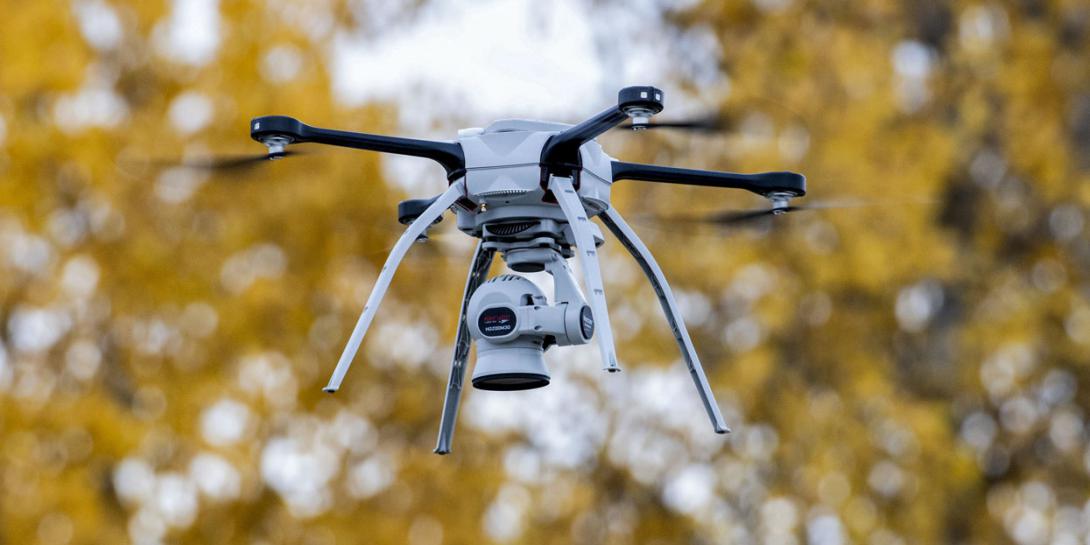DOD Policy Ignores Machine Learning
A mushroom cloud explosion in the New Mexico desert on July 16, 1945 forever changed the nature of warfare. Science had given birth to weapons so powerful they could end humanity. To survive, the United States had to develop new strategies and policies that responsibly limited nuclear weapon proliferation and use. Warfare is again changing as modern militaries integrate autonomous and semiautonomous weapon systems into their arsenals. The United States must act swiftly to maximize the potential of these new technologies or risk losing its dominance.
U.S. Department of Defense (DOD) policy fails to incorporate one promising technology, machine learning, into defense software. Specifically, DOD directive (DODD) 3000.09 requires extensive testing following any change made to software in defense systems such as drones, unmanned vehicles, or cyber defense systems. Machine learning incrementally improves software performance by slightly modifying the software in response to new information. It is valuable because incremental improvements optimize software performance quicker than human-coded improvements.
The DOD should remove the test requirement for defense software and fully incorporate machine learning to maintain its technological superiority and deter potential aggressors.
The testing requirement is particularly damaging because it negates the advantages of machine learning by requiring testing following every software modification. Without machine learning, military software is slower to optimize. In combat, seconds equate to lives, and a split-second difference in the time it takes for a semiautonomous defense system to act could decide victory or defeat. The stringent standard for testing after each software modification places the nation at a disadvantage versus competitors such as China, which is aggressively adopting machine learning into its defense systems.
Removing the testing requirement from DODD 3000.09 will increase software optimization. Increasing the speed at which software optimizes its performance will make defense systems more functional, effective and lethal. This will enhance the capability of defense systems to execute their mission successfully.
Another benefit of removing the test requirement is that it will decrease testing costs. This change will free DOD programmers from having to perform time-consuming testing. Those programmers can be reassigned to other priorities, such as adding new features to existing software. This change will more efficiently utilize a precious and limited resource.
Most importantly, this change will maintain the U.S. technical advantage in defense system software. The country must retain its technological edge over adversaries to remain the world’s premier military fighting force. Fully incorporating machine learning into defense software development will maximize existing advantages over rivals and discourage those rivals from directly challenging the U.S. military.
Concerns over this change tend to focus on the potential for defense systems to behave unexpectedly. However, it is essential to note that the United States has a human-in-the-loop requirement for kinetic military action. This means that semiautomated or automated systems must be given instructions by a human to execute their mission. The country will maintain its requirement for a human to order kinetic action by defense systems.
Another argument against this change is a concern that it will make machines too smart for our own good. However, machine learning is a narrow form of artificial intelligence used for specific software functions. Machine learning will not make defense systems generally intelligent nor make them difficult to control. Both the human-in-the-loop requirement and the specificity of machine learning mitigate the potential for adverse side effects if the testing requirement is dropped.
Machines are changing modern warfare as dramatically as atomic weapons did following World War II. The United States responsibly navigated the nuclear age in part by maintaining a technological advantage with those weapons, and ultimately this led to a remarkably peaceful world in the 20th century. Modern defense systems present another opportunity for the United States to continue shepherding a peaceful world.
To that end, the country should incorporate machine learning algorithms into weapon system software by removing the testing requirements described in DODD 3000.09. This change will speed optimization of defense software, efficiently use DOD resources, and maintain the country’s technological advantage. This change will not affect the DOD policy requiring that humans initiate kinetic action, nor will it make the machines "smart" and challenging to control. Removing the test requirement is common sense; it will strengthen the military and ensure that the nation's children grow safe and secure in a world where the nation’s strength keeps the peace.
Capt. Jason Nunes, USA, is an active duty signal officer currently assigned to George Washington University where he is working on a master's degree in international security. The views expressed here are solely those of the author in his private capacity and do not in any way represent the views of the Elliott School of International Affairs, George Washington University, the U.S. Army, or the Department of Defense.





Comment
Intelligent man.
Intelligent man.
At AFOTEC during my active
At AFOTEC during my active duty days, there was always pressure from PMs to expedite testing so systems could be rapidly deployed. Whether it be developmental or operational testing, lessons of the past must not be forgotten. Consider America's Mk. 14 torpedo of World War II, the repeated failures of which allowed many Japanese ships to survive, probably delaying victory in the Pacific war significantly. One might also consider that Boeing didn't believe their 737 Max software needed more testing.
Nice article.
Nice article.
Insideaiml is one of the best platforms where you can learn Python, Data Science,
Machine Learning, Artificial Intelligence & showcase your knowledge to the outside world.
Comments